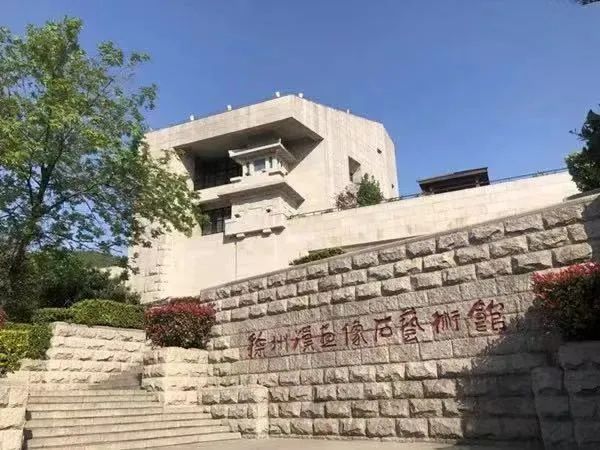Han Dynasty Blind Box Series Issue 4|Reading Cultural Blending in "The History of Embroidered Statues in the Han Dynasty"
Foreword
In 202 BC, Liu Bang, the great ancestor of the Han Dynasty, established the Han Dynasty with strong national strength and unprecedented territory. During the period of Emperor Wu of the Han Dynasty, with the military force of the dynasty and the perseverance of the courtiers, the Silk Road to the West was pierced, and the prestige of the Han Dynasty spread far and wide.
The Eastern Han Dynasty (206 BC-AD 220) and the Western Roman Empire (27 BC-AD 476) dominated the east and west of the earth and communicated with each other. What foreign cultures are recorded in the stone carvings of the Han Dynasty with "Han Dynasty History of Embroidered Statues", and what kind of international exchanges did they reflect at that time? Let's take a look together.
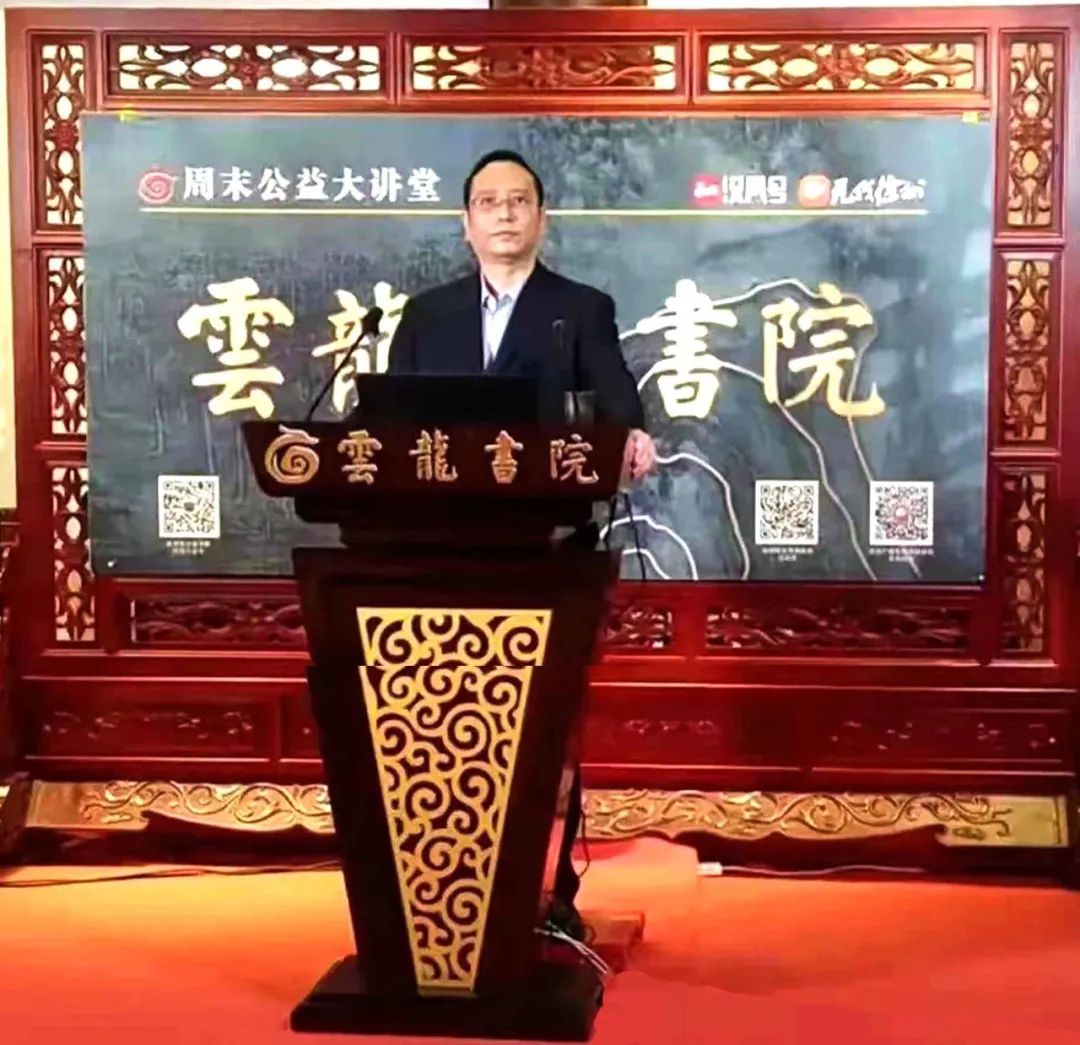
Yang Xiaojun, director and secretary of Xuzhou Cultural Center, former director, secretary and research librarian of Xuzhou Han Dynasty Stone Art Museum. Executive director of the Chinese Society of Chinese Painting, master tutor of China University of Mining and Technology and the Academy of Fine Arts of Jiangsu Normal University. Editor-in-chief of "Xuzhou Han Portrait Stone", "Chinese Han Portrait Brick", etc.; member of the editorial board of "Chinese Han Painting", "Art Museum", etc.
one
Han painting and Roman art were produced at the same time●
The Han Dynasty was in a period of rising feudal society in China, and adopted an inclusive attitude towards foreign cultures. As a diplomatic envoy, Zhang Qian's two trips to Central Asia failed to achieve the purpose of the mission, but as a geographic explorer, Zhang Qian's trip to Central Asia was of epoch-making significance.
It is precisely because of Zhang Qian's Central Asian exploration that changed the development of the history of world civilization, and made Chinese civilization and Mediterranean civilization meet directly in Central Asia, and then Chinese civilization represented by silk quickly spread westward, reaching the Roman Empire.
In fact, before Zhang Qian connected to the Western Regions, there were cultural exchange activities among the people. A large number of archaeological discoveries have confirmed that before the opening of the Silk Road, there existed a little-known natural avenue for cultural exchanges between the East and the West, that is, the "Prairie Silk Road" passing through the Eurasian steppe.
There are similarities and differences between the Han Dynasty and the ancient Roman Empire. Roman relief is an outstanding representative of Roman art. The style of Roman art is different from that of Greece. It is not only influenced by the art of Idalaria, but also absorbed the influence of the culture and education of Greece, Egypt and the two rivers.
Most of the Romans' art was aimed at praising the emperor and satisfying the luxurious living needs of the Roman aristocracy.
The main achievement of Roman fine arts is architecture, and the main part of architecture is the large-scale public buildings that reflect the power of the country. These buildings not only have commemorative significance, but also provide a place for public activities for the free citizens of the city, and also meet the needs of aristocratic life.
In the Han Dynasty, which was also a powerful country, the rich royal family was fascinated by the construction of space after death. They decorated the complex and magnificent tombs with paintings and sculptures, and used exquisite carving images to introduce their illustrious life, their hopes after death, and their desire to pray for eternal life. A new art form appeared in the Han Dynasty, which is the Han Dynasty portrait stone carving.
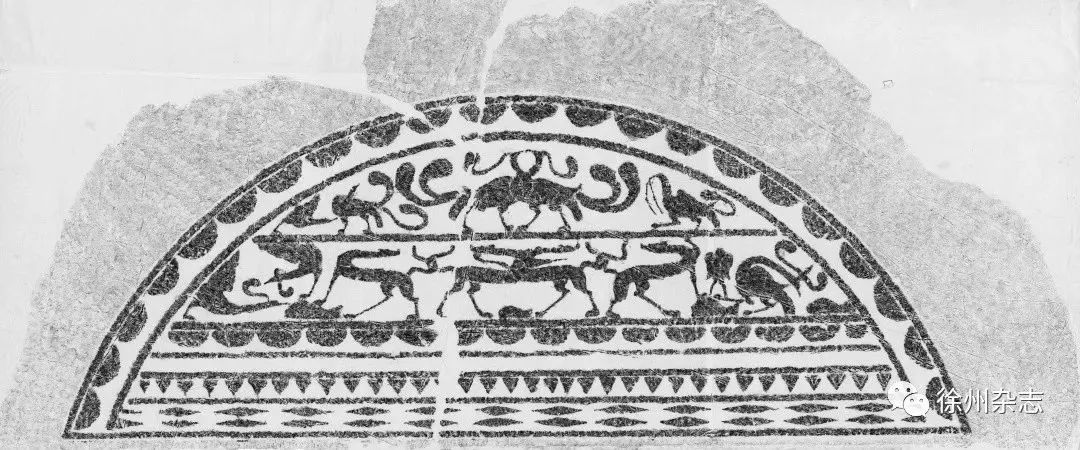
As a kind of funerary art, Han portrait stones are architectural components with carvings on buildings such as tombs, ground ancestral halls, and cemetery stone towers in the Han Dynasty. It emerged with the prosperity of the Han Dynasty and disappeared with the demise of the Han Dynasty. It has been popular in Chinese history for nearly three centuries and has become the essence of Han Dynasty art and a cultural representative of an era. It occupies an important position in the history of world art.
Mr. Lu Xun praised the stone art of Han statues as "deep and majestic", Mr. Jian Bozan called it a "history of embroidered statues in the Han Dynasty", and Mr. Feng Qiyong, a contemporary scholar, praised it as "a Dunhuang outside of Dunhuang".
two
An eclectic mix of animal shapes●
Mr. Lu Xun wrote in "Looking in the Mirror and Feelings" that in the Han Dynasty, "when taking foreign things, it is like taking them prisoner, driven by freedom, and never mind", and the atmosphere of the times is full of luxury, curiosity and new excitement.
According to the "Book of the Later Han Dynasty", the people of the time "loved Hu clothes, Hu tents, Hu beds, Hu sitting, Hu rice, Hu Konghou, Hu flute, Hu Wu, and all the nobles and relatives in the capital competed for it." "Extremely extravagant, palace carvings Li, serve the imperial treasures, skillfully adorn the system, and have both past lives."
Listed as one of the top ten new archaeological discoveries in China in 1995, the two gold belt buckles unearthed from the Tomb of the King of Chu in the Western Han Dynasty at Shishi Mountain in Xuzhou show the images of a bear and a tiger crawling on a horse and biting the horse's neck. , the horse was struggling to the death, kneeling on the front legs, twisting the rear body upwards, and being bitten by the bear. Eight eagle heads are engraved on the upper, right and lower sides of the gold belt buckle pattern, which expresses the thrilling and desperate struggle and shows the struggle of strength.
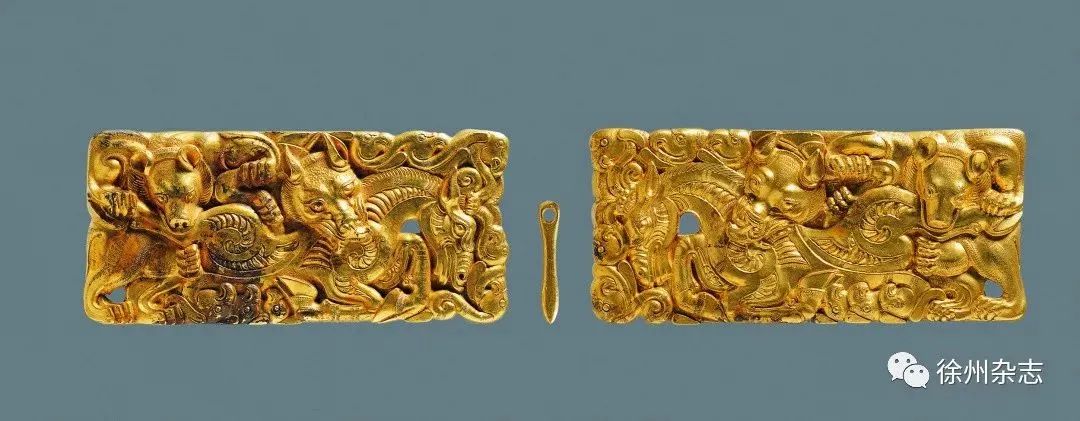
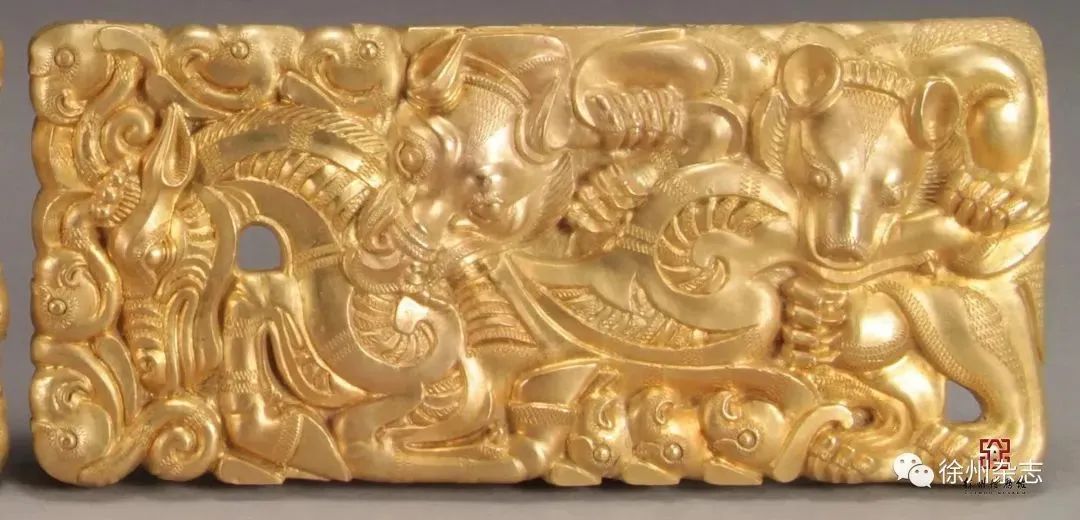
There are also pictures of dragons and tigers fighting and biting in the Xuzhou Han portrait stone "Dragon and Tiger Bite". The picture is engraved with four pterosaurs and winged tigers fighting each other. The left winged tiger and the winged dragon bite each other. Left pterosaur feet, right pterodactyl opened its mouth to bite.
Animal patterns are the theme of people's decorative patterns, but animal patterns have obvious differences in Eastern and Western cultures. In the decorative patterns of traditional Chinese culture, dragons and phoenixes are used as motifs, and the dance of dragons and phoenixes occupies the main body of the decorative patterns.

In Central Asia and West Asia, under the influence of nomadic culture, both the Scythians and the Huns showed the scuffle scenes of desperate fights between animals, forming a unique Assyrian animal art or Scythian animal art.
Civilization has carried out a long migration movement in the vast area of Eurasia, absorbed the nutrients of civilization from all sides, and formed a unique culture on this basis.
Judging from the ornaments of the Han Dynasty cultural relics that have been found, the Han Dynasty people used overlapping, compounding, contrasting, symmetrical and comprehensive methods to put together these strange shapes, and put them in the same picture with the soaring of dragons, the soaring of birds, and people and animals. one.
In the Han Dynasty, the decorative arts of the grassland nomads were mainly deformed beasts, opposite beasts, and winged beasts, with images of magical animals. They were either local original themes, or inherited the theme of West Asia, such as the lion's body. Winged human-headed beasts and half-eagle half-lion beasts, and the common modeling structures include single beasts, beasts fighting or hunting scenes. The animal images are close to realism, showing the aesthetic concept of early nomads.
This kind of animal pattern is called Scythian beast pattern or Scythian-Siberian animal pattern in academic circles. Scythian-style gold belt buckles with animal-themed patterns have been unearthed in the tomb of King Chu of the Western Han Dynasty at Shishi Mountain in Xuzhou and the tomb of Liu Yi, Marquis of Wanqu in Xuzhou.
three
Ancient Greek style in the tomb building of the Han Dynasty●
Ancient Rome was a huge empire centered on the Mediterranean civilization, spanning Europe, Asia and Africa, which lasted for more than 1,000 years. The ancient Roman civilization still deeply influences the world in various aspects, such as its exquisite and intricate architecture.
Ancient Roman architecture is inherited from ancient Greece, and it combines the architectural features of many regions in the European continent to form a gorgeous and atmospheric style, and at the same time has exquisite carving technology.
Influenced by foreign cultures, the content of stone carvings and images in the Han Dynasty has been greatly enriched. These changes are clearly exemplified in Xuzhou Han portrait stones, mainly in the construction of the tomb, the subject matter of the portrait, and the carving method.
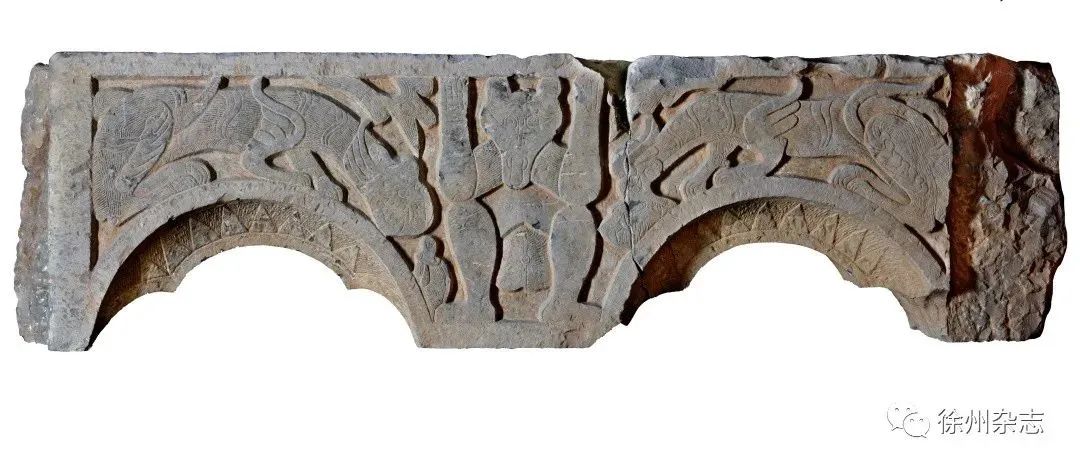
Regarding the tomb architecture of the Han Dynasty, Huang Xiaofen's "Archaeological Research on the Tombs of the Han Dynasty" records: "This technique of piling up stone materials forms a four-sided dome with a 'well' shape on the top... Judging from the function and form of the stacked caisson, it should belong to a relatively special four-sided knot-top dome.”
Also in order to increase the height of the building, the tombs of mixed masonry structures use the wedge-shaped brick roofing technique. This technology not only makes the top arc tall and smooth, but also strengthens the vertical load, which is very suitable for the top space requirements of the Han Dynasty tombs. Some tombs are made of arched beams. The Han Dynasty stone tombs in Jiawang area of Xuzhou used "arch stone beam architecture", and the arched structure is a typical feature of Roman architecture. This architectural form affects the style of Arabic architecture.
The Xuzhou Han Statue Stone Museum has a beam of a tomb, and the beam is carved with two arched door openings. The carving patterns on it have the characteristics of Western culture.
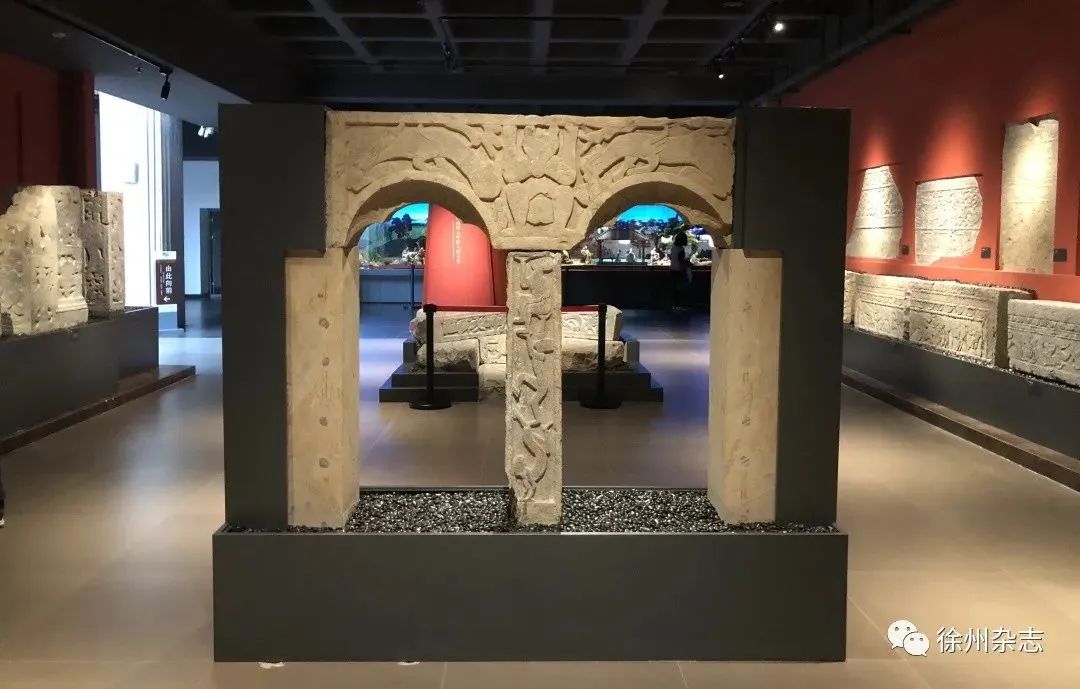
The vault is an important invention of the Mesopotamians. The vault does not need to rely on the columns to support its weight, thus increasing the open space. Sure, the vault was later carried forward by the Romans, influencing Western architecture from Roman times.
The structural characteristics of the tombs in the Han Dynasty reflected the influence of external factors. This coupon-type structure principle of Roman architecture was applied to the construction of the tombs by the craftsmen of the Han Dynasty in China.
The grooves on the circular stone pillars are typical of Greek architecture, and the number of grooves ranges from 16 to 24. The Greek-style stone column was also accepted by the Romans, and it was introduced to China through the Silk Road together with the coupon-top technology.
The stone pillars in the Xuzhou Han tombs are square and polygonal, reflecting the characteristics of Western architecture. There are 16 edges.
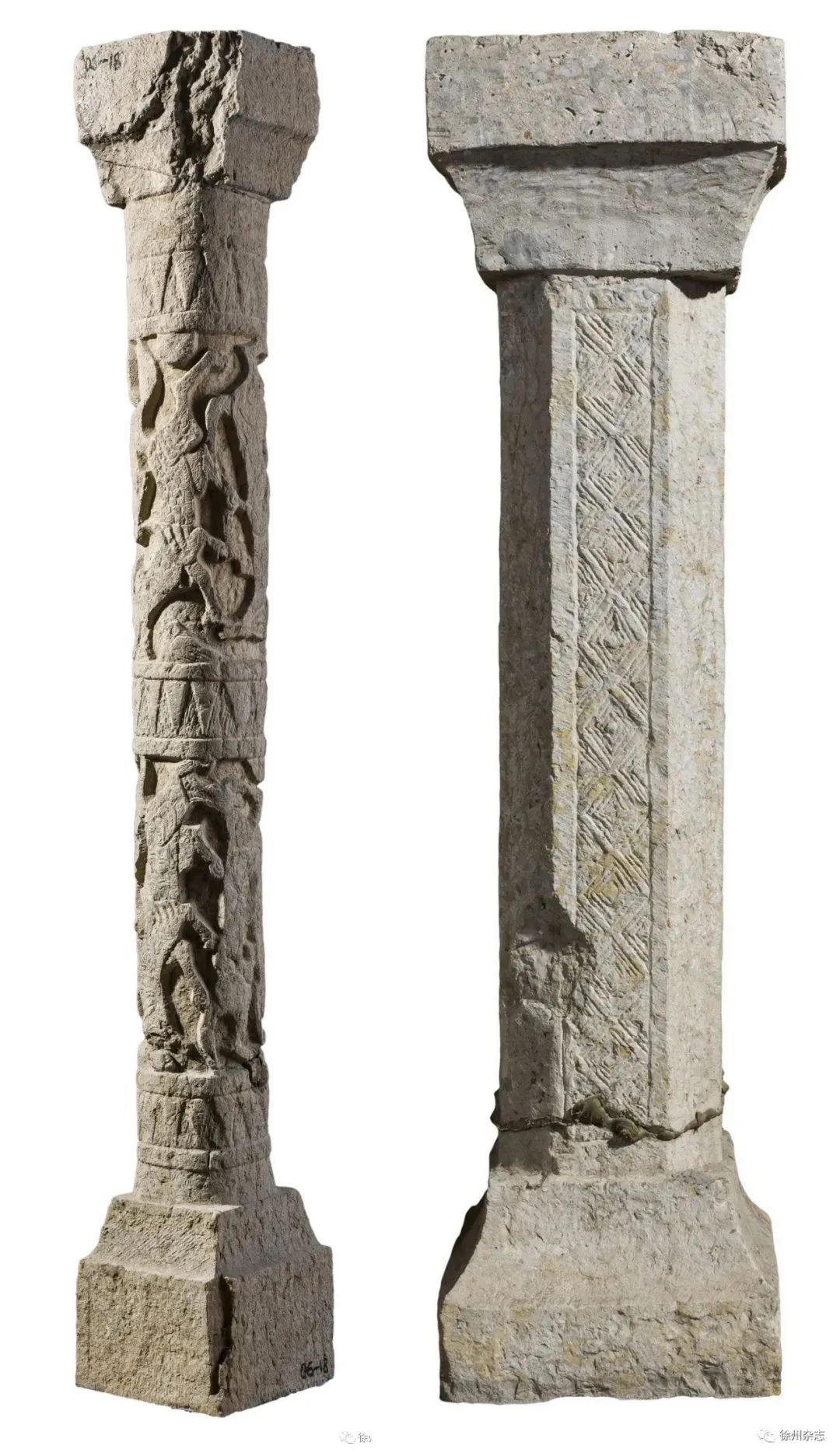
wantonly
Artistic fusion of feathered figures and winged beasts●
The subject matter of the Xuzhou Han statues seems to have more images showing the culture of the Western Regions. Among them, the winged beast is similar to the hippogriff, which is popular in the Scythian nation. At the same time, it also combines the rest The image of the winged beast in the art.
For example, the Han portrait stone "Dragon and Phoenix Crossing the Neck" unearthed from the Huangshan Han Tomb in Tongshan District, Xuzhou symbolizes that the tomb owner and his wife "wish to be birds in the sky, and they wish to be connected branches in the ground". There is also the "Crossing the Neck with Dragons", which is completely consistent with the "Alien Beasts Crossing the Necks and Mating Tails" (now in the Louvre, France) on the surface of the Sumerian circular seal in the fourth millennium BC.
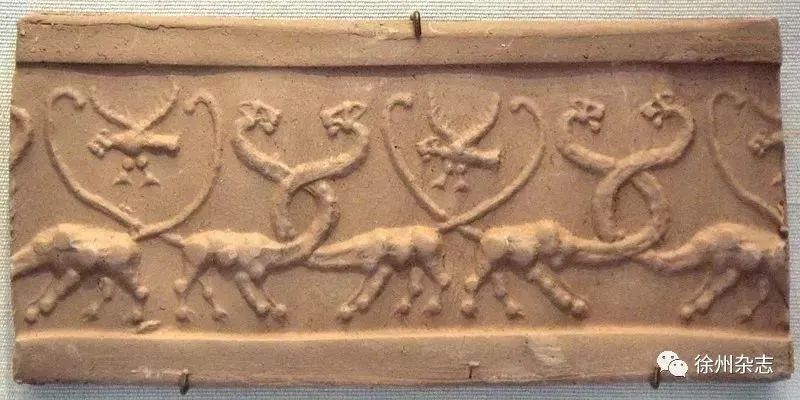
In addition, there is also a pattern of a double-headed eagle, the national emblem of the Eastern Roman Empire, in the portrait stone of the Han Dynasty in Xuzhou. In the middle of the picture is a double-headed eagle standing with its wings stretched and its tail stretched out. It has horns and beards, has two wings, and is decorated with scales.
During the Han Dynasty, the diplomatic route of the Central Plains had reached as far as Lixuan, namely Rome. At that time, not only Chinese caravans and diplomatic envoys arrived in Rome, but also Roman envoys, businessmen and acrobats traveled thousands of miles to China. The double-headed eagle, a symbol of national culture, was introduced to China along the Silk Road. As auspicious patterns engraved in Chinese stone carvings.

In Han Dynasty art, there is a common figure with wings on the shoulders, feathers on the legs, and big ears out of the top. It appears widely in all aspects of the art of the Han Dynasty, and basically runs through the art of the Han Dynasty from beginning to end, forming an important motif. This image is the feathered man mentioned in the literature, also known as Feixian.
The Classic of Mountains and Seas says: There is a country of feathered people and a people of immortality. Or it is said: When a person attains the Tao, his body has feathers and feathers. The concept of immortals is often seen in Han Dynasty literature, and Feixian has a special symbolic meaning in the world of Han thought and belief.
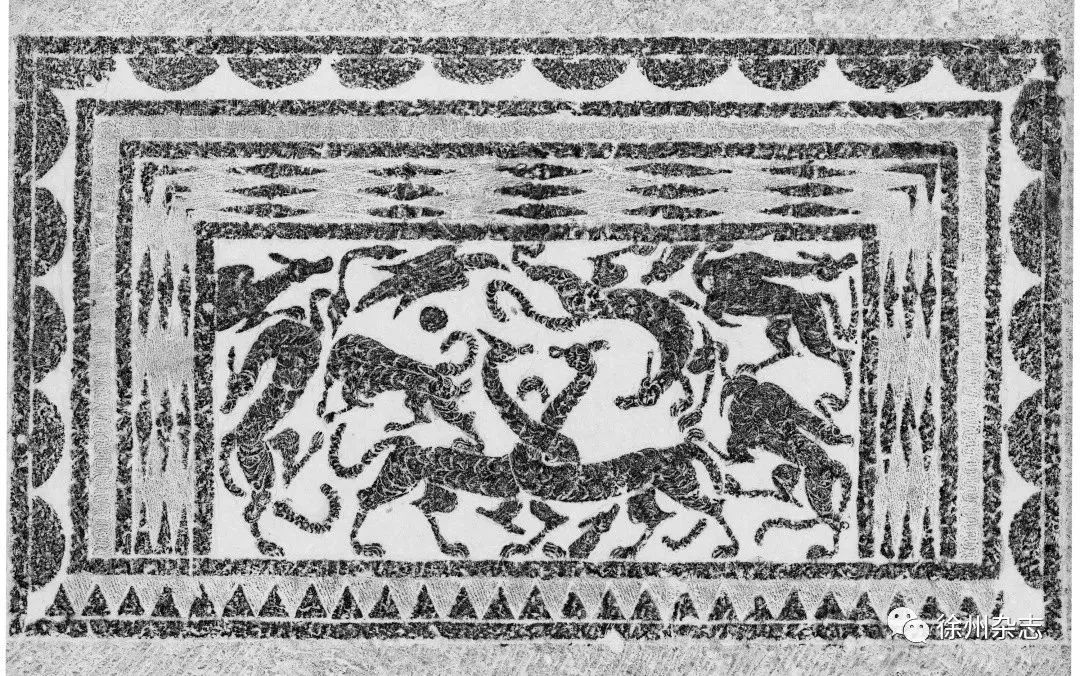
The basic shape of the feathered man is the combination of man and bird. The feathered man in the Han Dynasty stone is the angel in Eastern mythology. Yuren is the immortal believed by the ancestors of the Han Dynasty. The ancients believed that immortals had wings, so they were called Yuren, who were immortal.
There are feathered men with feathers or wings in the Han statues all over the place. They either fly or play with gods and beasts. They are often accompanied by the Queen Mother of the West and the Prince of the East. The images of feathered people in Ma Xing Tu, such images reflect the concept of "feathering to the sky" and "soul ascension" in the Han Dynasty.
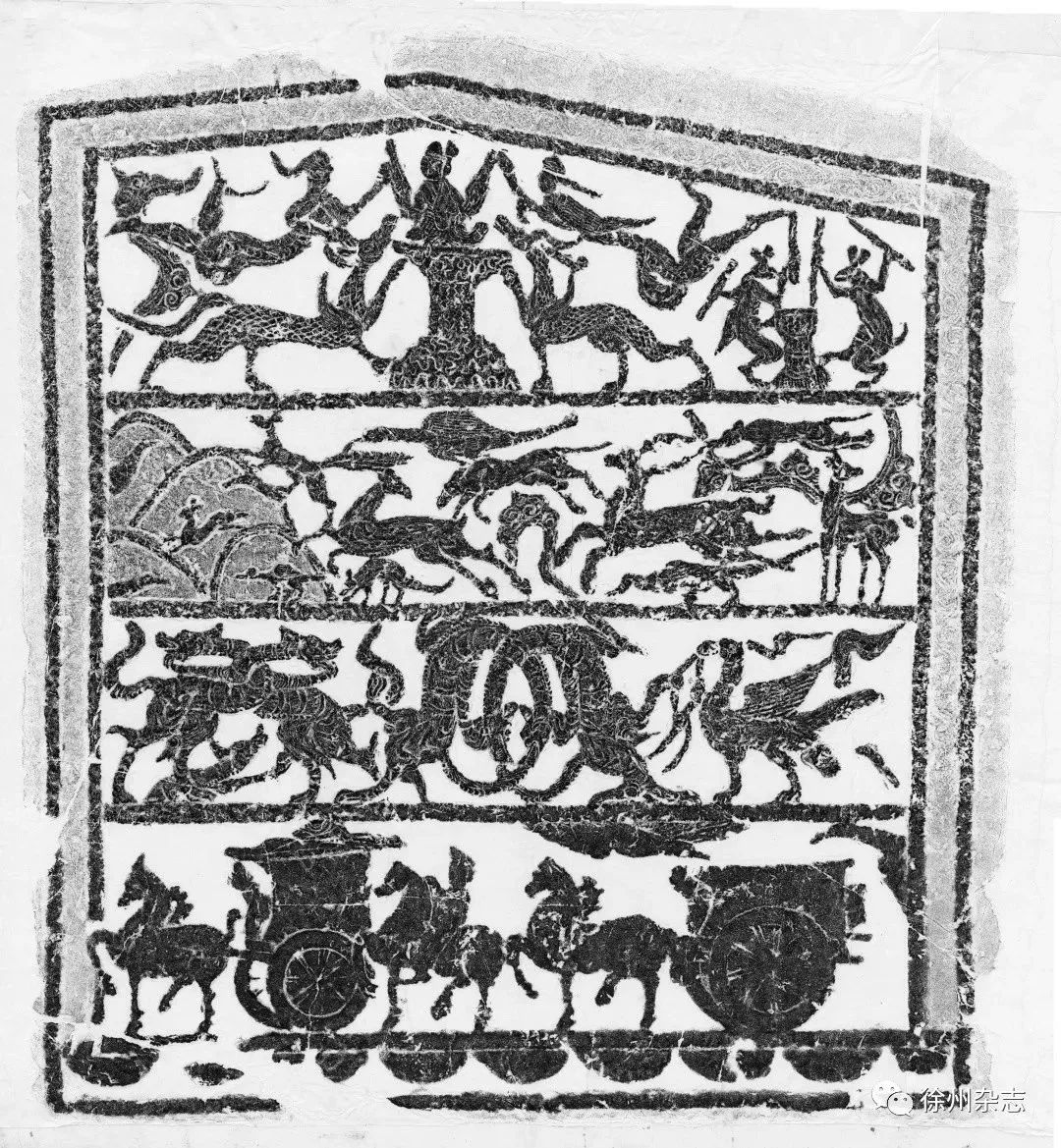
The people of the Han Dynasty were fond of immortals, and they pursued immortality and immortality. If you want to become an immortal, you have to have wings and "become an immortal". The appearance of a large number of feathered figures shows that people in the Han Dynasty always fantasized about being able to spread their wings and fly like birds and ascend to fairyland in order to live forever.
Wu
The image evolution of African lions introduced to China●
The image of a lion appeared in the stone portraits of the Han Dynasty in Xuzhou. The hometown of lions is in Africa, West Asia and South America. In 3500 BC, at the end of the Garce culture in ancient Egypt, lion sculptures with high artistic skills were created. Around 2650 BC, the Sphinx of the Khafre Dynasty began to use stone lions as the guardian of the mausoleum.
The lion was originally called suān ní in China. It is one of the nine sons of a dragon in ancient Chinese myths and legends. It is shaped like a lion and likes to sit on smoke, so the image generally appears on the incense burner, followed by puffing smoke.
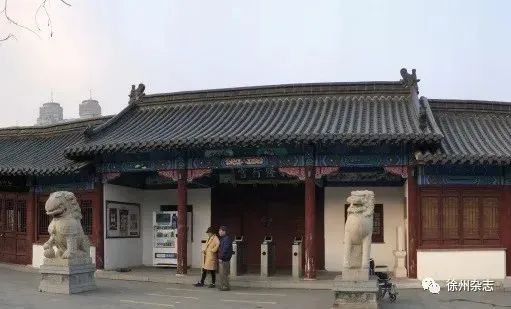
The stone lion in front of the Qianlong Palace in Xuzhou Museum
"Erya·Release Beasts" contains: "The scorpion is like a cat, eating tigers and leopards." The Sanskrit word for lion is Simba. According to the first sound of Simba, Persian calls the lion s r. During the Eastern Han Dynasty, the tribute lion from the Western Regions was named "Master". Yan Shigu commented: "Master, that is, the so-called 绊猊 in Erya."
The earliest introduction of lions into China was after Zhang Qian of the Western Han Dynasty was envoy to the Western Regions. It is recorded in the Book of the Later Han that in the Eastern Han Dynasty, there were many countries in the Western Regions who presented lions to the Han court many times. In the late Eastern Han Dynasty, as the society gradually became familiar with and accepted the image and meaning of the lion, it was widely used and became one of the important decorative patterns of the divine beast in the hands of craftsmen.
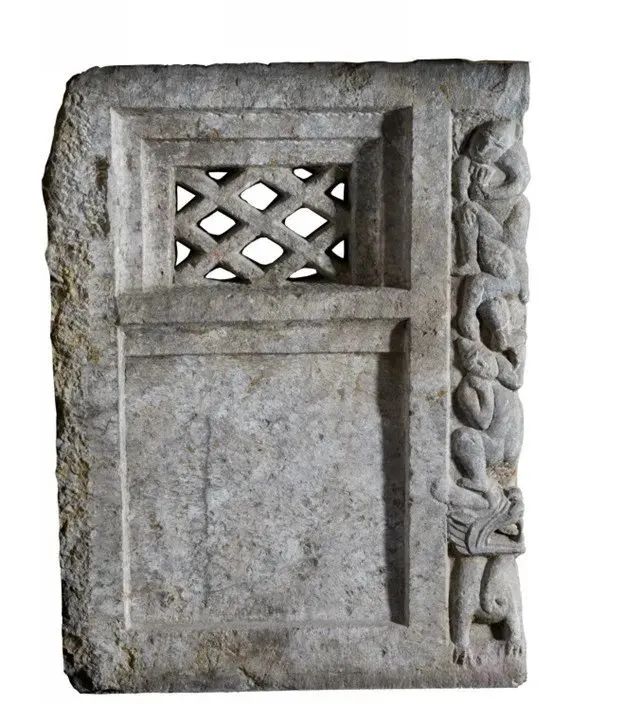
The diamond-shaped tomb window in the Xuzhou Han Dynasty Stone Art Museum has the side reliefs of Hu people overlapping each other.
Next engrave a roaring lion (below).
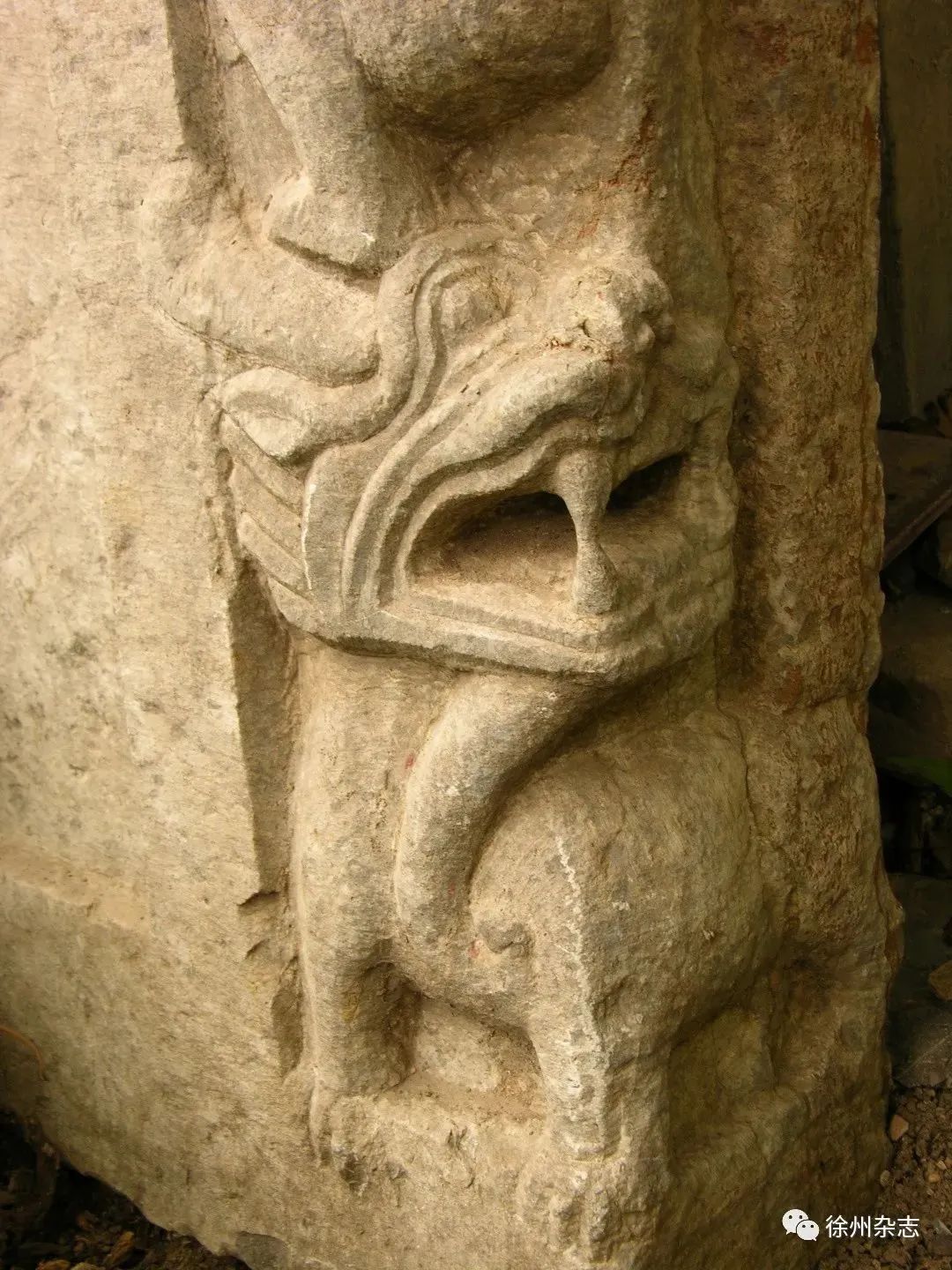
The lions introduced into China were quickly deified, with a pair of wings on their bodies, some with one horn on their heads, and they were called "Tianlu", and some with two horns on their heads, and they were called "to ward off evil spirits."
At present, the earliest lion with a clear date is a pair of stone lions in front of the Wushi Temple in Jiaxiang, Shandong in the first year of Jianhe (147) of Emperor Huan in the late Eastern Han Dynasty. The images of lions, deer and warding off evil spirits in the stone portraits of the Han Dynasty in Xuzhou are all present.
Art knows no borders. Chinese artists of the Han Dynasty two thousand years ago focused on learning from others' strengths. They adopted an inclusive attitude towards the excellent cultures of various ethnic groups, and many foreign cultural elements were eventually integrated into Chinese culture. The foreign artistic images in the stone portraits of the Han Dynasty reflect the influence of foreign culture on the culture and art of the Han Dynasty. Tianlu, evil spirits, and lions absorbed the animal images of Central Asia and West Asia and localized them.
It is precisely because of the integration of these foreign images that the stone portraits of the Han Dynasty appear more colorful. Today, when we appreciate and marvel at the grandeur and delicacy of the Han Dynasty stone carvings, we should also see the Han Dynasty's cultural and artistic exchanges with foreign countries reflected by the Han Dynasty stone carvings, so that we can better understand the Han Dynasty stone carvings and the culture and art of the two Han Dynasties.
